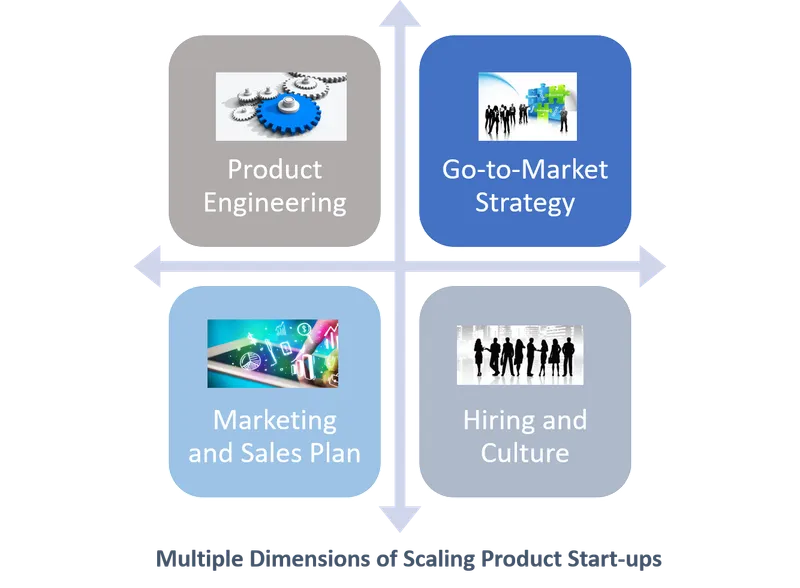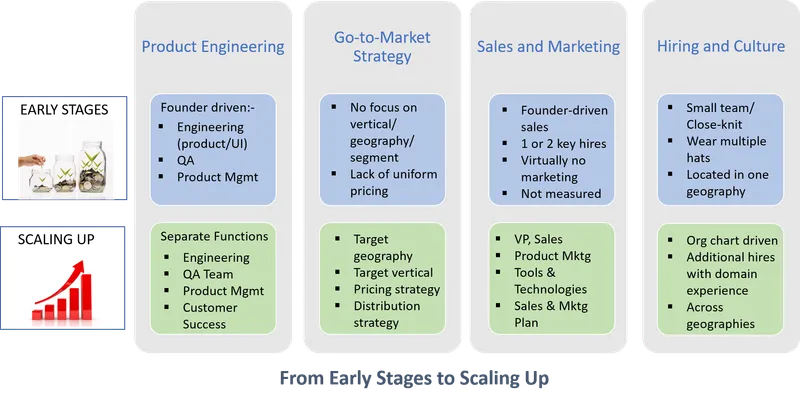Here's what the road to scaling product startups looks like
At a recent product conference, I moderated a session, 'Road to scaling products' which is definitely a crucial aspect to address the ultimate success of a venture.
At Endiya Partners, we believe in investing in innovation-led product startups that have a high growth potential and we work closely with our portfolio companies to enable them to achieve that scale. Let’s understand what exactly does scalability entail and the several considerations that help the business achieve a 50-60 percent growth in revenue YOY, and eventually become a market leader.
Once your startup has achieved the product-market fit and you have secured the necessary funding, you can begin to ready yourself to take your business to the next level. Although one may tend to think directly in terms of increasing customer acquisition and thereby the revenue, there are multiple dimensions to be taken care of for the company to grow in a healthy and balanced manner.

Let’s explore each of these dimensions individually and understand the difference between the way a startup operates in the early stages of the transformation that takes place while scaling up.
Refer to the figure 'From Early Stages to Scaling Up' below.

Product engineering/development
Having the perfect product and then beginning to scale may sound ideal but that is a far cry from reality. Product development is indeed a continuous process as once your product hits the market, you need to be prepared for incorporating the market feedback derived from customer reaction and competition.
In the early stages of the organisation’s growth, the founders wear several hats, including that of product engineering head and product manager. They are the ones making decisions about the product features and release cycles, and they also double up as the QA and User experience testing teams.
However, when you are looking to scale up, it is imperative to build a well-defined product management function, with key personnel taking over the role. Their core competency would be having a thorough understanding of the customer value proposition and defining a product roadmap based on the customer requirements.
They are experts in managing the process from feature definition to implementation and QA and will need to make critical decisions on a build vs buy approach during the product development lifecycle. They are tasked with delivering the company’s growth objectives while continually tracking the customer feedback and competition. In short, scaling your product depends largely on creating this function as an integral cog in the wheel and dynamically adapting to the evolving user requirements as you scale.
Go-to-market strategy
Since the first customers are the hardest to get, startups are in a situation where they normally sell to any customer willing to buy, while compromising on the revenue in exchange for the value of some traction. When you begin to accelerate to the next level, it is time to define the 'ideal customer' and apply your strategy to this customer profile.
This is the phase where you narrow your approach to the target audience and define a clear go-to-market strategy. This will include the target geography, vertical, pricing, and distribution (direct vs channel partner). A GTM strategy will clarify the plan and direction for all involved, will keep you focussed and off the wrong path. It will also ensure effective customer success.
The final phase, in which the goal is to achieve market leadership, the firm needs to be able to sell profitably. This is possible when you have a thorough understanding of your customer acquisition costs, a repeatable business model and minimum support requirements.
Sales and marketing
In the early stages of a startup’s journey, the sales are primarily founder-driven with very little marketing. In this phase, you may even be going out of your way to accommodate customised requests for your product. As the first few sales are crucial in getting a first-hand understanding of the market reactions, the founding team can be armed with this experience to move to the next step and think about their Sales and Marketing Plan.

At this point, you need to make your first Sales team hires, including a VP of Sales and Product Marketing Manager. Together, they will be responsible for bringing the product to market and driving adoption of it. Depending on your GTM strategy, your sales and marketing plan should be a streamlined one comprising aspects like online and offline marketing, thought leadership and content marketing, events & PR, SEO/ SEM approach and lead generation which will include Marketing Qualified Lead, Sales Accepted Lead, Sales Qualified Lead, and eventually the customer.
The sales and marketing team will need to be armed with the right sales acceleration tools and technologies that will be integrated into your overall technology landscape.
Hiring and culture
While scaling up, an integral part of transitioning to a well-functioning organisation is being able to pass on the many hats that the founding team wears to the multiple executives that are hired. Early on, a startup has a pretty flat structure and a small team usually located in one geography.
However, growing into a scale-up, the new organisation structure will comprise teams and managers in various functions like the product, sales, and marketing, business development, HR, and finance. The scaled-up team will have executives with domain experience and even the founders may need to report to them.
You will eventually have a presence across geographies. The real challenge then is to ensure that all teams are well integrated and aligned towards the company’s growth objectives. Initially, in a small team, everyone tends to know each other, and the startup has a close-knit culture that pervades.
However, as you start to grow, the team needs to adapt to the idea of co-working within a larger and structured group of people. There will be more ideas and perspectives in the mix, and it is important that the employees are able to grasp the larger vision of the company. The best way to weave consistency in your culture is to carefully define it based on what matters to you as a business and demonstrate it from the top. It also helps to build culture aspect in the hiring process itself that will help identify employees that are suitable for your company in the long term.
Journey to the top
Given a great product, a great team, good market potential, and initial traction, the difference between the startups that make it and the one’s that don’t, lies in the execution and the road they take to scaling up.
There is also a fine balance to be maintained in the timing of your growth plans. You’ll want to ensure that you are not scaling too quickly and compromising on building a healthy business, nor are you growing too slow and risking losing your market to competitors.
Reaching your goal of market leadership requires focusing on your niche, building strong customer relationships, and establishing robust processes to achieve the three keys of Predictability, Repeatability, and Profitability. Lastly, don’t forget to enjoy the ride!
(Disclaimer: The views and opinions expressed in this article are those of the author and do not necessarily reflect the views of YourStory.)
(Disclaimer: The views and opinions expressed in this article are those of the author and do not necessarily reflect the views of YourStory.)







